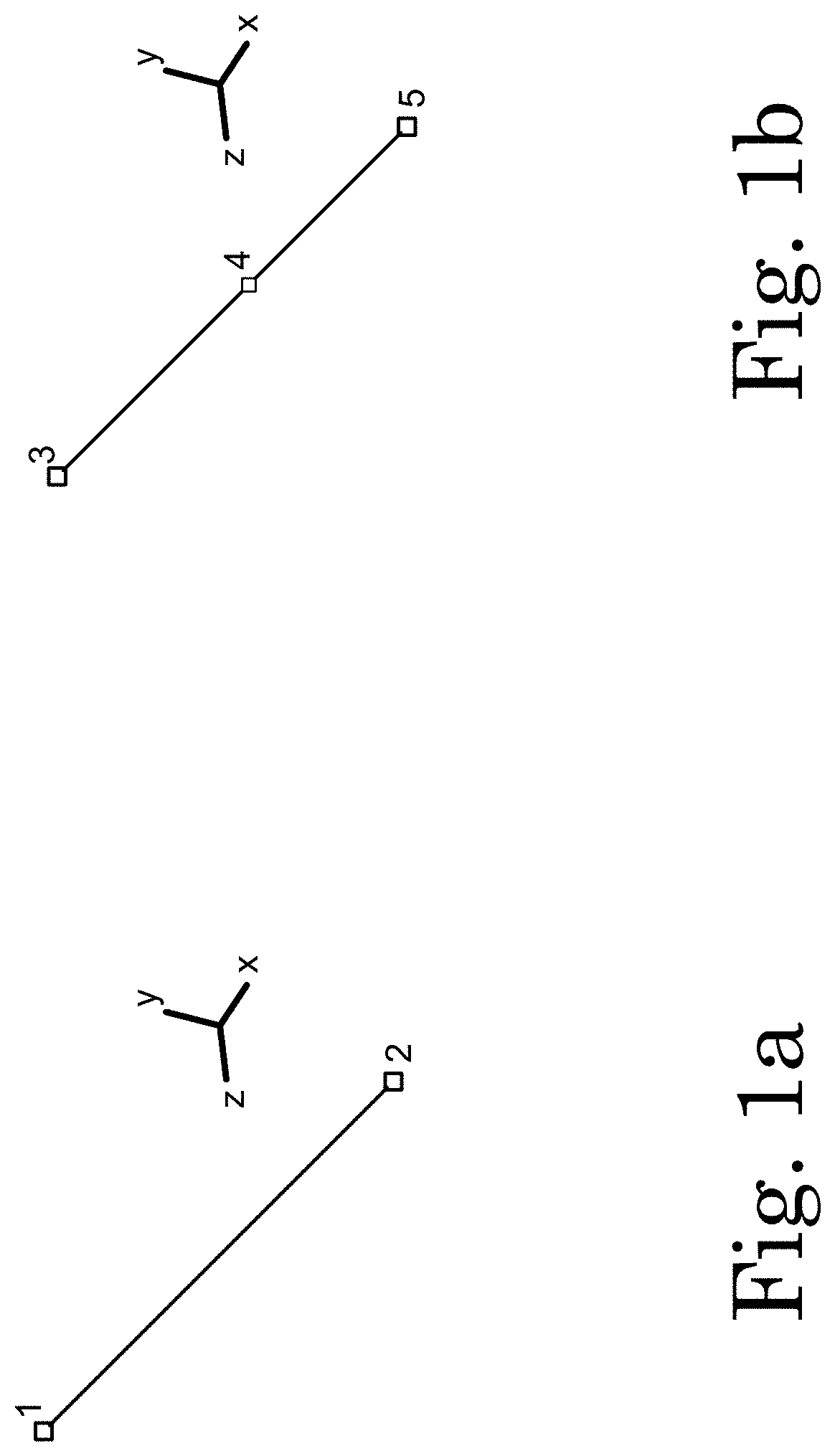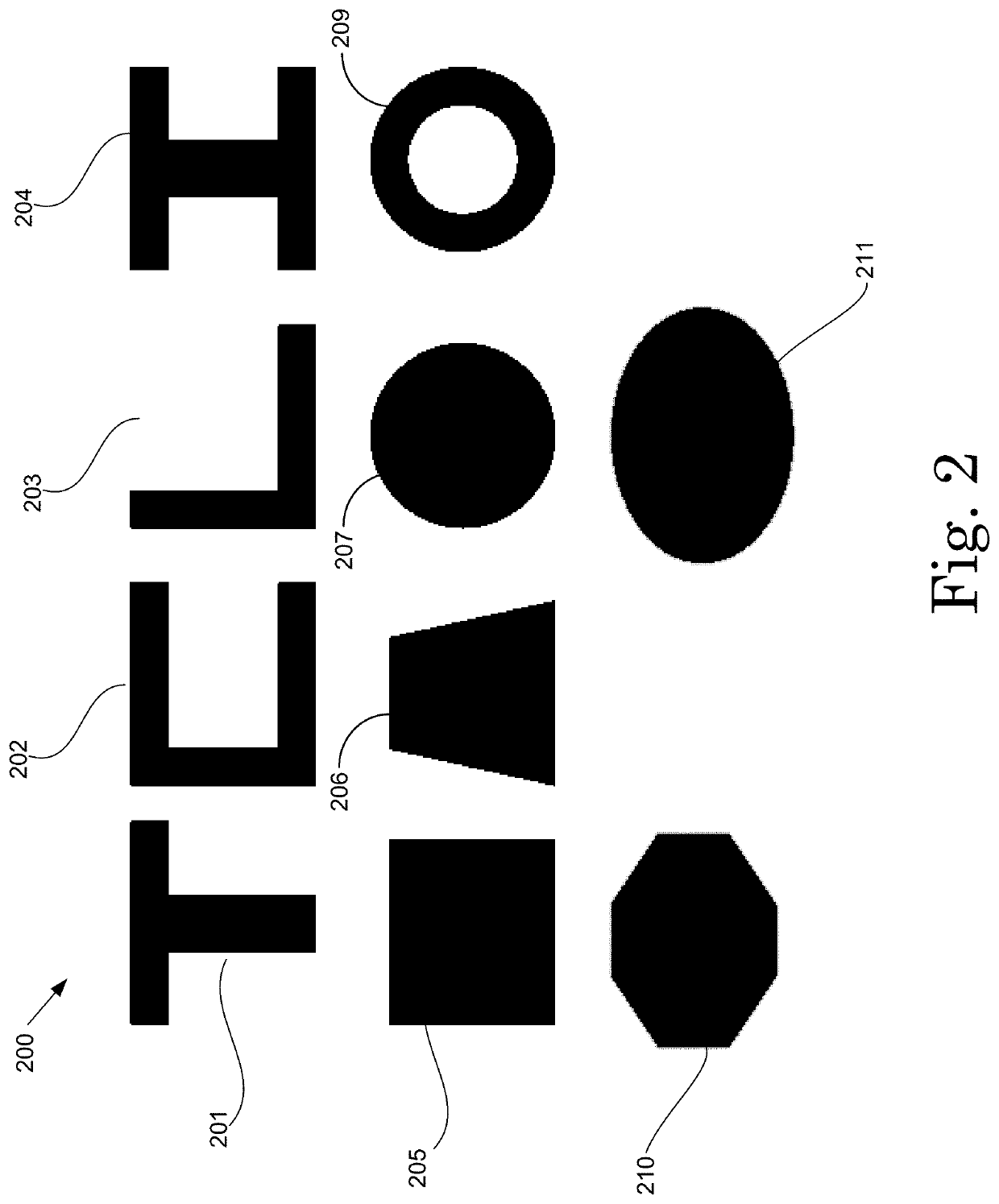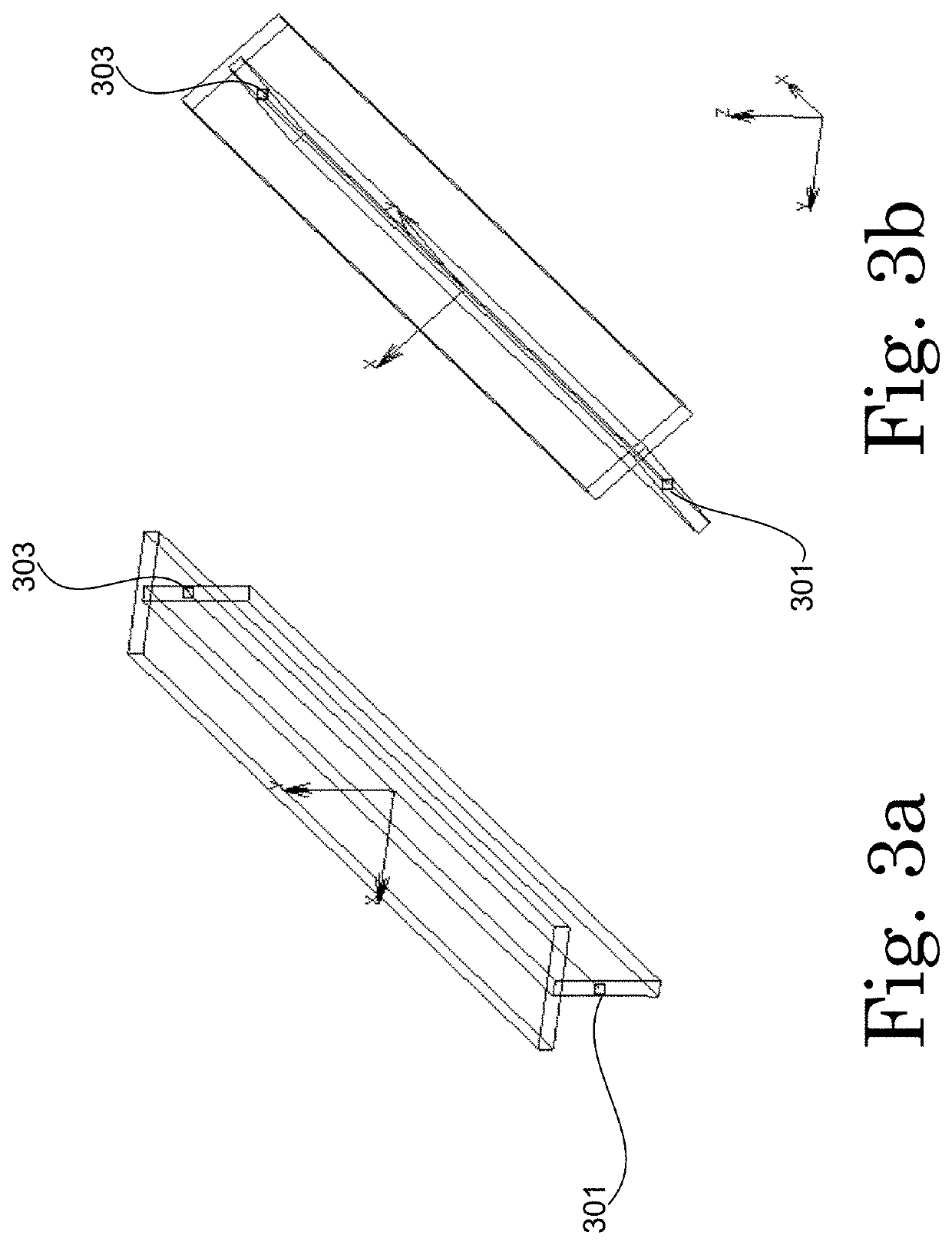Systems and methods for simulating contact between physical objects
- Summary
- Abstract
- Description
- Claims
- Application Information
AI Technical Summary
Benefits of technology
Problems solved by technology
Method used
Image
Examples
Embodiment Construction
[0032]The numerical simulation of beams and pipes are performed using three dimensional beam (3-D) elements in one embodiment. These elements as represented in FIGS. 1a and 1b and are geometrically represented by either two or three nodes (e.g., nodes 1, 2, or 3), and these nodes in the finite element sense are described by their three coordinate positions X, Y and Z. Each node in FIG. 1a has six degrees of freedom Ux, Uy, Uz, θx, θy, and θz. In certain formulations an additional degree of freedom representing the twist is also represented. The numerical behavior of these beams or pipes is governed by their shape functions. The technique described below is suitable for all three dimensional beam, pipe or other elements. Furthermore, these three dimensional representations are often simplified to represent two dimensional (2-D) beam or shell behavior. A user may simulate contact between two objects by using a computer-aided design (CAD) geometry for use in computer-aided engineering ...
PUM
 Login to View More
Login to View More Abstract
Description
Claims
Application Information
 Login to View More
Login to View More - R&D
- Intellectual Property
- Life Sciences
- Materials
- Tech Scout
- Unparalleled Data Quality
- Higher Quality Content
- 60% Fewer Hallucinations
Browse by: Latest US Patents, China's latest patents, Technical Efficacy Thesaurus, Application Domain, Technology Topic, Popular Technical Reports.
© 2025 PatSnap. All rights reserved.Legal|Privacy policy|Modern Slavery Act Transparency Statement|Sitemap|About US| Contact US: help@patsnap.com



